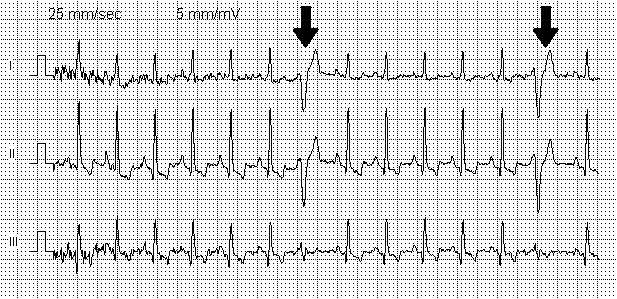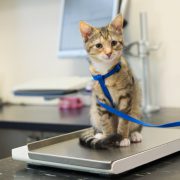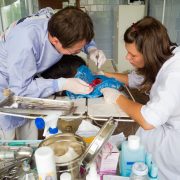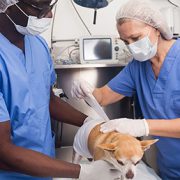How ECG monitoring contributes to patient care
How ECG monitoring contributes to patient care

Requires membership/payment
This article can be accessed via RCVS Knowledge Library Membership (click here).
In our edition of: Aug 2018
In our categories of: small animals
Pace, C. (2018) How ECG monitoring contributes to patient care. The Veterinary Nurse, vol. 9(4), pp. 216-223
Electrocardiography (ECG) is a valuable monitoring aid that records information concerning the rate, rhythm and electrical activity of the heart. ECGs can be used as a one-off trace, as part of a diagnostic work up to identify arrhythmias in a clinical case, as part of a multi-parameter anaesthetic machine to monitor the depth of anaesthesia, or serially to monitor treatment.
This article aims to simplify the interpretation of ECGs and build confidence in veterinary nurses by providing a quick and simple guide to support ECG patient monitoring.
Guidance is given on how to record a good quality trace; understanding the sinus complex ECG positioning and machine settings, and interpretation of the trace. Worked-through examples to determine what the heart rate is, and the P-QRS relationship are given.
The author discusses the common causes of arrhythmia and provides a list of patients that are at risk of arrhythmias during anaesthesia.
There is a need for nurses to increase their confidence in the use of ECG machines to identify rhythm disturbances. This can be achieved by asking the following five questions:
- What is the heart rate?
- Is there a P wave for every QRS complex?
- Is there a QRS complex for every P wave?
- Are they consistently and reasonably related?
- What is the QRS morphology? Is it tall and upright or wide and bizarre?
Confidence in recording an ECG takes practice and this article summarises the basics required.
Whilst diagnostic interpretation of an ECG is the role of veterinary surgeons, developing confidence and skills in this area will allow veterinary nurses to take a more pro-active role in patient care, enabling them to alert the vet when concerns arise.
Image copyright attribute: Two ventricular premature complexes in a ECG of a dog. This file is licensed under the Creative Commons Attribution-Share Alike 3.0 Unported license.
Join the discussion
We encourage discussion on all material highlighted in each edition of inFOCUS. Use the button below to join the conversation on Twitter and include your comment in the feed for this issue.







Leave a Reply
Want to join the discussion?Feel free to contribute!